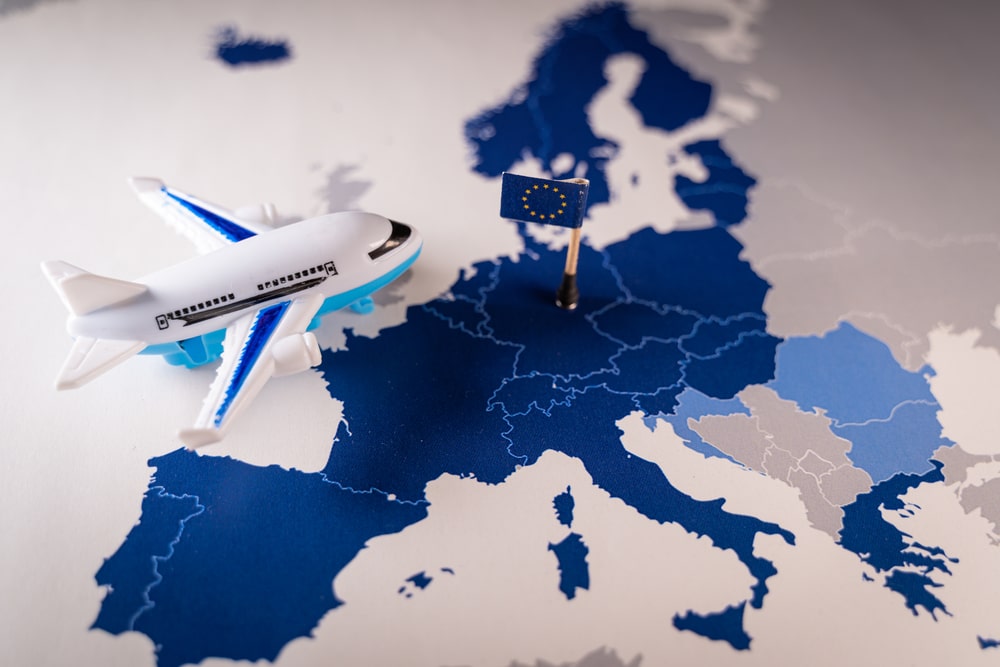
New Rules to Govern Passage Between Schengen Area Countries
26 European countries are all about to get new rules to help curb the spread of the coronavirus. Most notable among them are the potential for new travel restrictions, a newly laid-out safeguard against threats, and different ways to go about internal border checks.
The Schengen area refers collectively to the 26 European countries united by a landmark multilateral agreement allowing free travel within and across its member states. That alliance allows both citizens and non-citizens in the EU, as well as products, to travel freely without being subjected to individual countries’ border controls, and without the need for a passport.
That alliance is trying new tactics to help with coordination efforts. The problem is, travel from country to country has been hugely consequential in how rapidly the coronavirus spreads, and how well it’s able to be subdued. On December 14th, 2021, the European Commission announced new rules that they hope will strengthen the area, while also forming a plan of attack against possible future pressures – be that from terrorists or another epidemiological threat.
The coronavirus is not the first challenge that group of nations has faced in recent years. In 2015, the region faced a refugee crisis that pressured some of the members to reinstate internal border controls, going completely against what the alliance represents. Shortly after that, persistent terrorist attacks and threats of further violence in Europe lead to even tighter controls. With COVID-19 risking the effect of being a nail in the coffin for the Schengen Area, the European Commission is stepping in hoping to reinvigorate trust among the member nations.
“Schengen is an essential element of the area of freedom, security and justice and a key element for the functioning of the Single Market. Its creation has brought significant social and economic benefits to European society,” the European Commission stated in a memorandum.
The first step the Commission aims to take is to rethink the Schengen Borders Code. The only way that region can function as its intended is for rules to be applied uniformly across each country and each border. When individual governments choose to impose restrictions or tighten control, it undermines the strength of the union. With that in mind, the Commission hopes to strengthen security in the nations’ external borders so that they can free up movement within their internal borders.
During the pandemic, there had been some communication about which countries the Schengen Area should implement travel restrictions, and the member nations agreed upon an approved list of areas with epidemiological problems that could pose issues for the member nations. However, not all member nations followed that list to the letter. The European Commission hopes to rectify that, again emphasizing the need for trust in order for the Area to function. A new rule laid out says measures taken out at external borders should be applied uniformly across all 26 member nations in the Schengen Area.
Another rule that is not necessarily new but is being re-emphasized among the nations is to only use internal border controls as a last resort. The Commission says there should be a risk assessment for any country in the union that believes it may need to implement controls for more than 6 months. Any country that sways from the border control agreement for eighteen months will be subject to a review by the Commission, which would then issue an opinion on whether the controls remain necessary. The Commission also announced that no internal border control should ever remain in place for a period longer than 2 years.
To help that rule stay in place, the Commission has discussed “alternative measures” that heighten security without closing the internal borders. Namely, the Commission says member countries should enforce their regular police powers and police checks instead of closing down access between nations. Public health checks could also take precedence over closed internal borders.
To make sure those rules function, the Commission is calling for improved cooperation, communication, and coordination among police and public health departments in different countries.
“All the solutions proposed in the New Pact on Migration and Asylum will contribute to effective migration management, closer cooperation, responsibility-sharing among Member States and a binding solidarity framework, thereby reinforcing the Schengen area,” the memorandum states.
The Commission isn’t just focused on Plans A and B, however. One rule laid out is that the member nations must create contingency plans in the event that a threat affecting a majority of those nations cannot be dealt with in a way already laid out. In this section, the European Commission understands that individual nations may very well have to jump ship in order to address immediate threats. However, other member states should be able to propose possible solutions, and internal border controls should remain regulated as uniformly as possible to ensure that threat does not extend to other countries.
“The pandemic has shown very clearly that the Schengen area is key for our economies and societies,” said Commissioner for Home Affairs, Ylva Johansson in a statement. “With our proposals today, we will ensure that border controls are introduced as a last resort, based on a common assessment and for only as long as needed. We are giving Member States the tools to address the challenges they face. And we are also ensuring we manage the EU’s external borders together, including in situations where migrants are instrumentalized for political purposes.
The new rules affect the following countries:
- Austria
- Belgium
- Czech Republic
- Denmark
- Estonia
- Finland
- France
- Germany
- Greece
- Hungary
- Iceland
- Italy
- Latvia
- Liechtenstein
- Lithuania
- Luxembourg
- Malta
- Netherlands
- Norway
- Poland
- Portugal
- Slovakia
- Slovenia
- Spain
- Sweden
- Switzerland




































































































